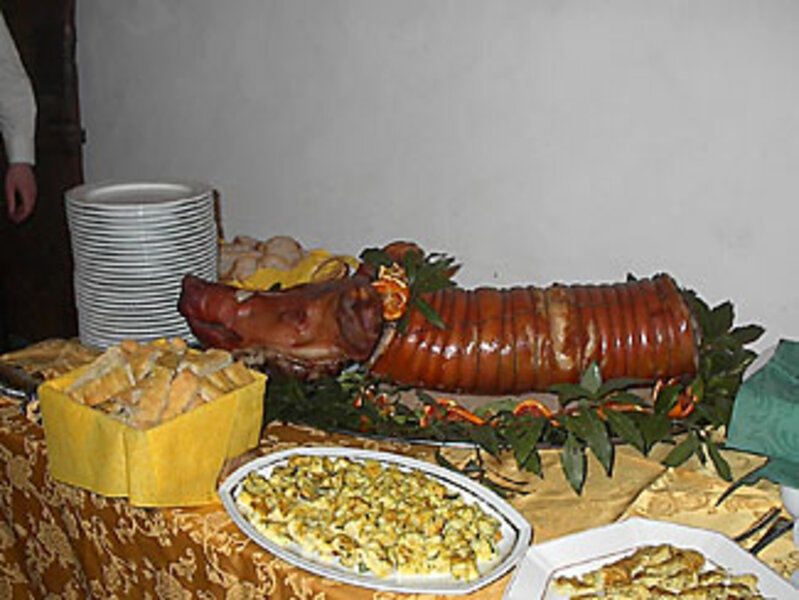A taste of Tuscany
Loading...
| Lucca, Italy
When Giovanna Grado decided to oversee the restoration of the abandoned 16th-century villa her family acquired years ago in Tuscany, her first thought was, "This is a nightmare!" But there was one aspect of the final objective – to make it an attractive destination for tourists – that was definite in her plans: "The food had to be authentic."
So along with period-accurate furnishings, traditional gardens, and renovations that had to conform to the property's status as a national monument, Ms. Grado insisted that, "We serve only traditional meals using local ingredients." To accomplish this, she tracked down Giuseppe Scarpellini, who, as a young man, had been to culinary arts schools during the winters and trained in hotel restaurants in the summers, but wanted to settle where his family still lives. And she engaged him to be resident chef at the Buonvisi Estate.
"It was my grandmother who showed me how to cook the first time," the shy Mr. Scarpellini observed as he navigated his way around the imposing wooden island at the center of the large kitchen at the back of the villa.
When the 18-room site hosted its first wedding party this spring, he chose some dishes that were inspired by his grandmother's influence: grilled eggplant spread appetizer, ravioli with ricotta cheese and potato filling (see recipes at left) a main course centered around porchetta (roast pig), and a rich, creamy molded dessert with fruit sauce.
The Tuscan hills were favored locations for rich Italians seeking summer villas because they featured abundant sunshine, ample rainfall, and gentle slopes that created a natural irrigation system to support kitchen gardens. Centuries ago, there were more than 400 summer retreats sprinkled across the hillsides, where the wealthiest families could escape the heat and smells of urban areas.
Now, only a handful remain intact. But the countryside still reflects the region's agricultural heritage, with acres of grape arbors, olive groves, lemon trees, and caper vines of the region's small farms visible in all directions. "You have so many fresh things growing here," explains Scarpellini. "In the end of spring and [in] the summertime, we have ... tomatoes, green beans, lima beans, carrots, and all the greens for insalata [salad]. And there are some others from the garden – the zucchini, the peppers, the eggplant, the melon – where you use the food, but you also use the blossoms, which you can eat. And they add a fresh look to the dish, too. In the early spring, like April, I also like to use the artichokes, the asparagus, and the pears." Fall and early winter also have their specialties, he adds, mentioning porcini mushrooms and broccoli as his favorites.
For those who pick sites like Buonvisi as a home base while they enjoy the rich history and eye-filling sights of Tuscany, the food choices extend past any villa's dining room, of course.
If Florence is on the Tuscany tour itinerary, for example, a satisfying caprese salad will tide you over at midday, with its array of fresh tomato and mozzarella slices, basil, and olive oil.
At a time when news stories are alerting vacationers that many chefs in some of Rome's more prestigious restaurant and hotel kitchens are not native-born, Grado points with pride to her villa's local chef and the cuisine he prepares for her guests. "Italians take their food very, very seriously. I want anyone who comes here to get the real experience when they sit down at my table."






